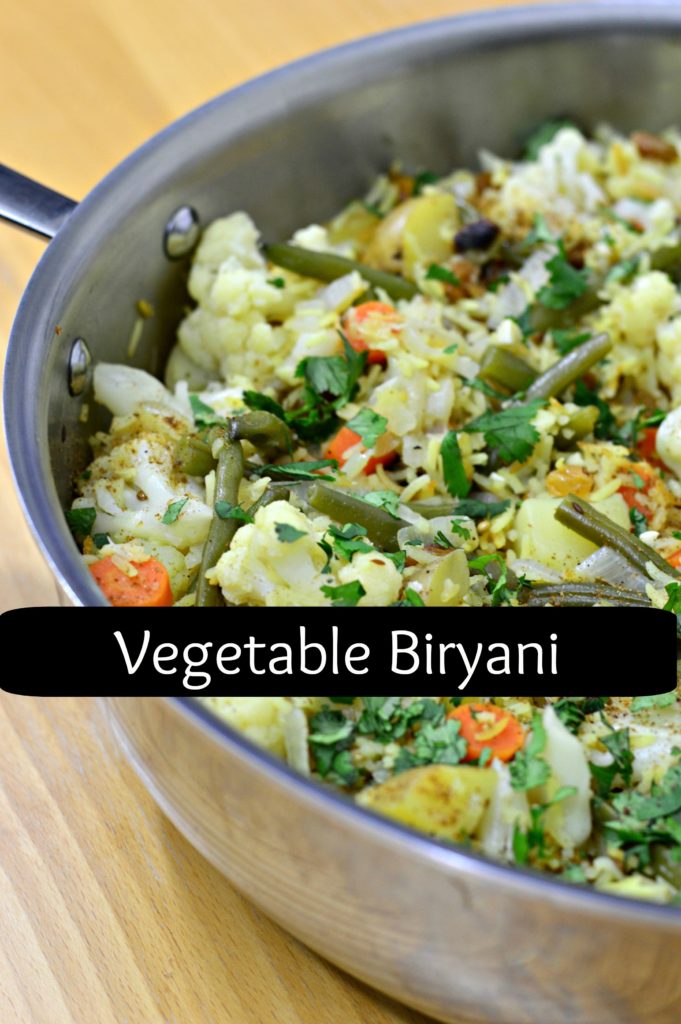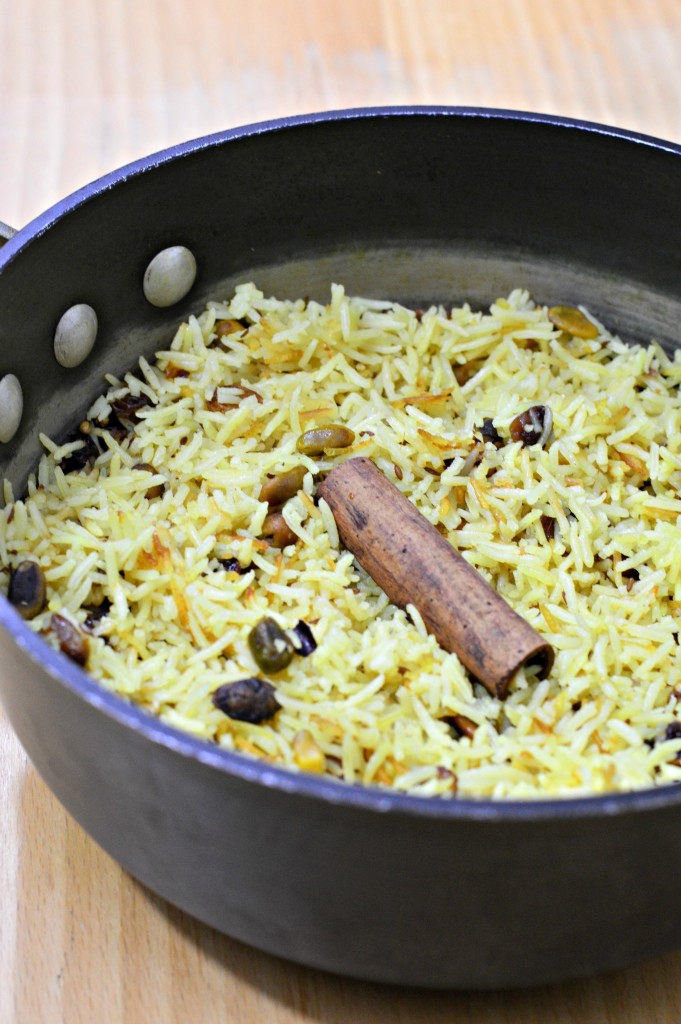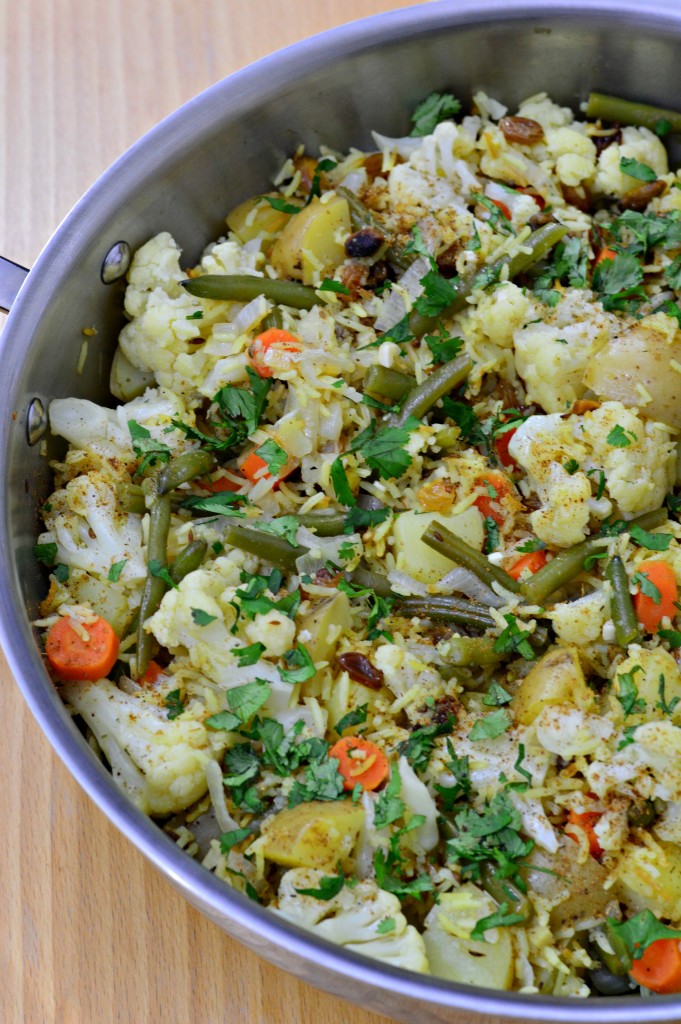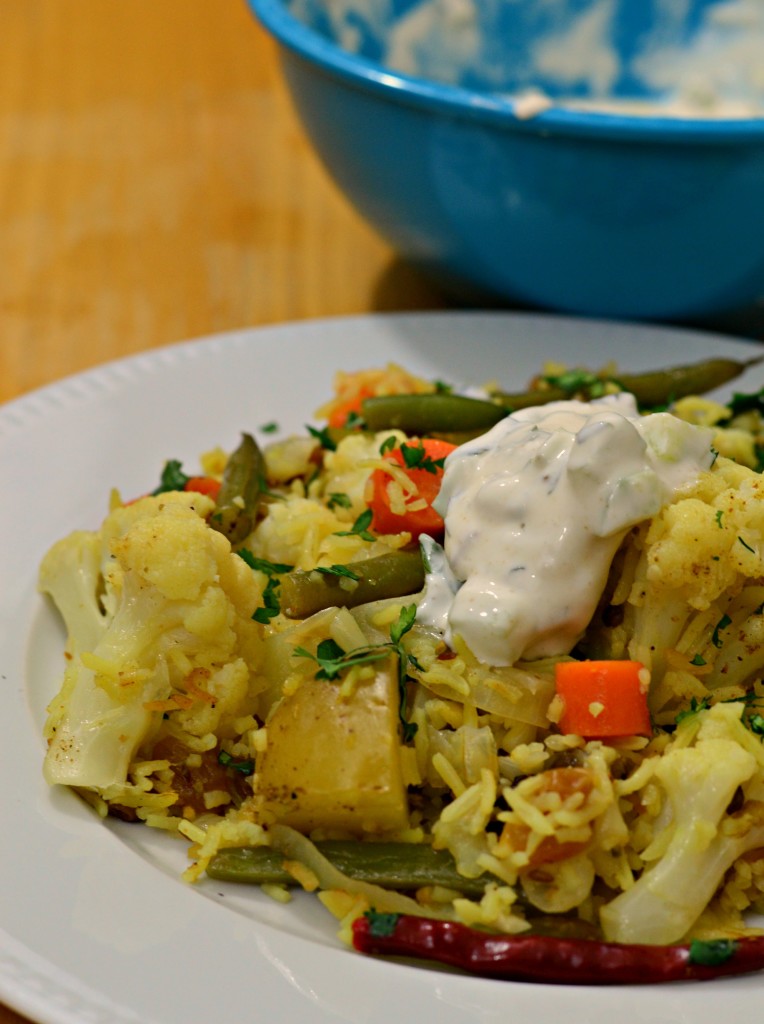Sometimes the tail wags the dog around here. I had a big batch of cucumber and mint raita sitting in the refrigerator — a recipe that I had developed for my upcoming cookbook on food swapping — and needed to come up with a way to use it. I have always enjoyed heaping cool, refreshing raita on biryani, the spicy South Asian mixed rice dish, when eating at Indian restaurants. And that was all the inspiration I needed to create my own version of vegetable biryani.
I absolutely love Indian cuisine, which of course is incredibly varied, like the country itself. With the help of my friend Susan Pachikara, who leads culinary tours of Chicago’s Indian neighborhood, I have dared to try to recreate some of my favorite restaurant dishes at home. As global cuisines go, I think South Asian is very accessible for the home cook. You do not need a lot of specialized equipment and many of the ingredients are familiar.
To make your homemade Indian dishes closer to the real thing, it is worthwhile to invest in some whole spices, such as cumin seeds, coriander seeds, cardamom pods and cinnamon sticks. Sometimes I toast these spices in oil as the foundation of my dish. Other times I toast these spices in a dry skillet and then grind them to create spice mixes such as Garam Masala.
I also typically have ghee, Indian clarified butter, in my pantry — you can find it at a good grocery store — but you could certainly make a very credible version of this dish with regular butter or vegetable oil. Lastly, I bought an enormous bag of imported Basmati rice on Susan’s recommendation when I visited an Indian grocery store with her; I kind of enjoy that authentic touch. But if you only have regular rice, again, your biryani will still be delicious.
To make vegetable biryani, you start by cooking the rice and vegetables separately and then combine them into a flavorful, healthy one-dish meal. The long list of ingredients and instructions make this dish look more complicated than it is. This can really come together in an hour or so for a weeknight dinner. I highly recommend garnishing the rice and vegetables with a healthy dose of plain Greek yogurt to add moisture and tanginess. If you happen to have raita or want to make it yourself, all the better.
So skip the take-out and try making this classic Indian biryani at home next time!
- 1 TB ghee or butter
- 1 cinnamon stick
- ½ tsp each cumin and coriander seeds
- 3 cardamom pods
- ¼ tsp turmeric
- 2 TB golden raisins
- 2 TB blanched almonds or roasted pistachios
- 1 cup Basmati rice
- 2 TB ghee or butter
- 1 yellow onion, halved and thinly sliced
- 4 cloves garlic, minced
- 1-inch piece ginger root, peeled and minced
- ¼ cup golden raisins
- 5 cardamom pods
- 1 tsp each cumin and coriander seeds
- 3 whole dried Indian chiles or pinch red pepper flakes (optional)
- 3 carrots peeled and sliced
- ½ head cauliflower cut into florets
- 2 cups green beans trimmed and cut into two-inch pieces
- 3 cups waxy potatoes, such as Yukon Gold, cut into bite-sized pieces
- Begin by making the rice. In a medium saucepan, melt the ghee over medium heat.
- Add the spices, raisins and nuts and toast for two-three minutes over medium-low heat until fragrant.
- Add the rice and toss to coat with the fat and spices. Toast for one to two minutes.
- Add two cups of water and a pinch of salt and bring to a boil.
- Wrap the saucepan's lid in a clean dish towel and cover. Turn the heat down to a simmer and simmer rice until cooked through, about twenty minutes.
- After twenty minutes, turn off the heat and allow the rice to steam an additional ten minutes. Fluff with a fork and remove the cinnamon stick before combining with the vegetables.
- While the rice is cooking, prepare the vegetables. Melt the remaining ghee in a large, deep skillet over medium heat.
- Add the onion, garlic and ginger and saute over medium-low heat until softened.
- Add the raisins, spices and chiles, if using, and saute until fragrant.
- Add the carrots, cauliflower, green beans and potatoes and toss to combine.
- Add enough water to cover the vegetable halfway and bring to a boil over high heat.
- Cover and turn heat down to medium. Steam the vegetable until cooked through, fifteen to twenty minutes.
- Once vegetables are tender, remove the cover. If there is still a lot of water in the skillet, cook with the cover off until most of the water has evaporated.
- Add the cooked rice to the vegetables and stir to combine. Remove chiles if using.
- Taste and adjust seasonings. Serve with yogurt or raita and chopped fresh cilantro.










I think some version of Biryani has to be a part of Sephardic cuisine. My Turkish grandma had a recipe.
Well, it is certainly derived from Persian rice pilafs. In fact, the word “biryani” comes from Farsi.